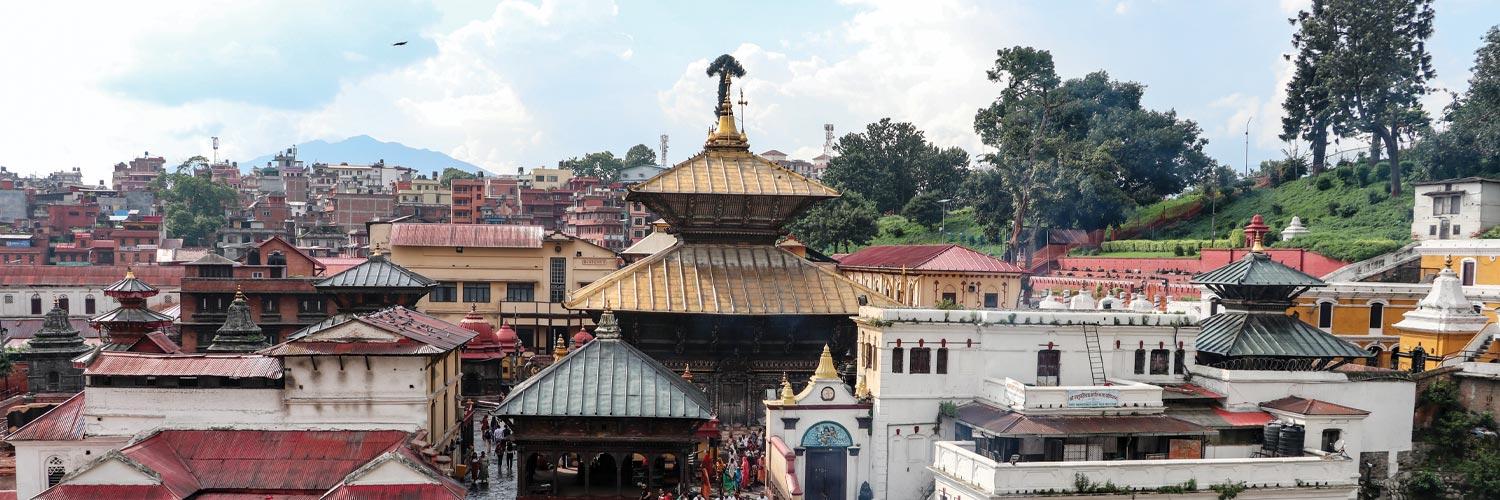Pashupatinath Temple is one of the most revered and sacred temples in Nepal. Situated on the banks of the Bagmati River in Kathmandu, this temple holds immense cultural, spiritual, and historical significance for Hindus. With its stunning architecture, rich traditions, and deep-rooted religious importance, Pashupatinath Temple attracts millions of pilgrims and tourists from around the world. In this blog, we delve into the history, architecture, significance, and the spiritual experience at Pashupatinath Temple.
History of Pashupatinath Temple
Pashupatinath Temple has a history that stretches over 2,000 years, making it one of the oldest temples in Nepal. The temple is dedicated to Lord Shiva, known here as Pashupatinath, the Lord of all living beings. The temple’s roots date back to the Lichhavi period, and it has been an important religious site for centuries.
The temple's construction has undergone various phases over time, with many renovations and additions. The current structure, however, dates back to the 5th century AD. Over the years, the temple has gained recognition as a UNESCO World Heritage Site due to its spiritual significance and remarkable architectural beauty.
Significance of Pashupatinath Temple
Pashupatinath Temple is one of the holiest pilgrimage sites in the Hindu world. It holds particular importance as one of the Char Dham- the four sacred places that Hindus believe one must visit during their lifetime to achieve moksha (liberation). The temple is especially revered by followers of Shaivism, who believe that the Pashupatinath Temple is the earthly abode of Lord Shiva.
The temple complex consists of several shrines and structures, including the main pagoda-style temple, the cremation ghats, and the surrounding areas that are dotted with smaller shrines and statues. Pilgrims visit Pashupatinath to perform religious rituals, seek blessings, and participate in the daily prayers and ceremonies held in the temple.
Architecture of Pashupatinath Temple
The architectural design of Pashupatinath Temple is a fascinating blend of Hindu and Buddhist elements. The pagoda-style temple features a golden roof, intricately carved wooden struts, and stunningly detailed sculptures that depict various deities and religious symbols. The temple’s central sanctum houses the revered Shiva Linga, which is bathed in sacred water.
The temple’s courtyard is vast, adorned with several smaller shrines, and the sacred Bagmati River flows nearby, adding to the spiritual ambiance. Visitors can also witness the sacred ritual of cremation at the ghats located near the temple, where families cremate their loved ones, a ritual believed to help the soul attain moksha.
Festivals and Rituals at Pashupatinath Temple
Pashupatinath Temple comes alive during the major Hindu festivals, especially Maha Shivaratri, the most significant day dedicated to Lord Shiva. During this time, thousands of devotees from across Nepal and India come to Pashupatinath to offer prayers, fast, and perform rituals to please Lord Shiva. The temple is beautifully illuminated, and a grand celebration takes place, complete with prayers, dances, and religious processions.
Other festivals celebrated at Pashupatinath include Tihar, Dashain, and Teej, each bringing its unique rituals and celebrations. Devotees believe that visiting the temple during these festivals amplifies the blessings they receive from Lord Shiva.
Visiting Pashupatinath Temple
If you're planning a trip to Kathmandu, visiting Pashupatinath Temple is a must for anyone interested in experiencing the spiritual heart of Nepal. The temple is open to all visitors, though non-Hindus are restricted from entering the inner sanctum. However, tourists can still explore the temple grounds, admire the stunning architecture, and witness the religious rituals from the temple's viewing platforms.
When visiting Pashupatinath Temple, it’s essential to respect the local customs and practices. Wearing modest clothing, removing shoes before entering certain areas, and observing silence during prayers and rituals are important ways to show respect.
How to Reach Pashupatinath Temple
Pashupatinath Temple is located just a short distance from Kathmandu’s city center, making it easily accessible for both tourists and locals. The temple is about a 15-minute drive from the main tourist hub of Thamel, and taxis or local buses can take you directly there. The Bagmati River, which flows next to the temple, provides a scenic backdrop, making the journey to the temple an enjoyable experience in itself.
Conclusion
Pashupatinath Temple stands as a beacon of faith, history, and architectural wonder in Nepal. Whether you're a devotee or a curious traveler, the experience of visiting this sacred site is one that is deeply spiritual and unforgettable. The temple not only offers a glimpse into the rich religious traditions of Nepal but also provides a serene space to reflect and connect with one’s inner self.
From its rich history and stunning architecture to the cultural practices that thrive within its walls, Pashupatinath Temple remains a vital part of Nepal’s spiritual landscape. If you find yourself in Kathmandu, don’t miss the opportunity to explore this awe-inspiring landmark with Best Heritage Tour.
Contact Best Heritage Tour Company
Visit Best Heritage Tour Pvt.Ltd. official website to gather information about BHT services.
Look for contact details (Phone number/Viber /What’s App: +9779851149197 / +9779810043046),
Email: bestheritagetour@gmail.com/ info@bestheritagetour.com to get in touch with them directly.
Author: Best Heritage Tour
Date: 26th March, 2025

